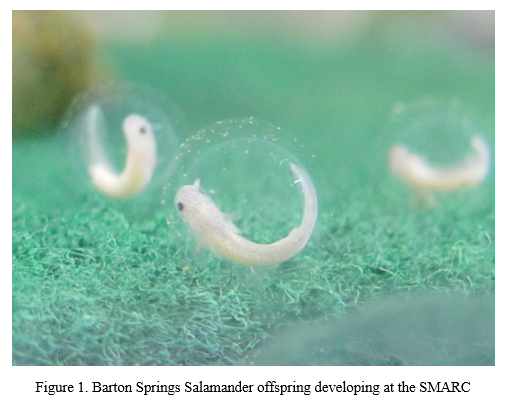THE ROLE OF AQUACULTURE IN THE CONSERVATION OF AMPHIBIANS AT THE SAN MARCOS AQUATIC RESOURCES CENTER, UNITED STATES FISH AND WILDLIFE SERVICE
Aquaculture has become an increasingly important tool for meeting the needs of a growing human population in a sustainable manner . However, aquaculture also plays a critical role in the conservation of at-risk species. Captive assurance colonies and captive breeding colonies of amphibians have been established by universities, nonprofits , zoological institutions, and conservation agencies around the world. T he International Union for Conservation of Nature and Natural Resources (IUCN) listed captive programs among the top response priorities relevant to amphibian conservation globally . The San Marcos Aquatic Resources Center (SMARC), a United States Fish and Wildlife Service facility, is an aquaculture facility dedicated to the support of federally listed species. The mission of the SMARC is to provide support for, and undertake research on, endangered, threatened, and species at risk. The SMARC maintains captive assurance colonies for multiple amphibian species, including the Texas blind salamander (Eurycea rathbuni), San Marcos salamander (Eurycea nana), Barton Springs salamander (Eurycea sosorum), and the Houston toad ( Anaxyrus [Bufo] houstonensis) . Aquaculture-related activities for these species are inherent to this mission.
